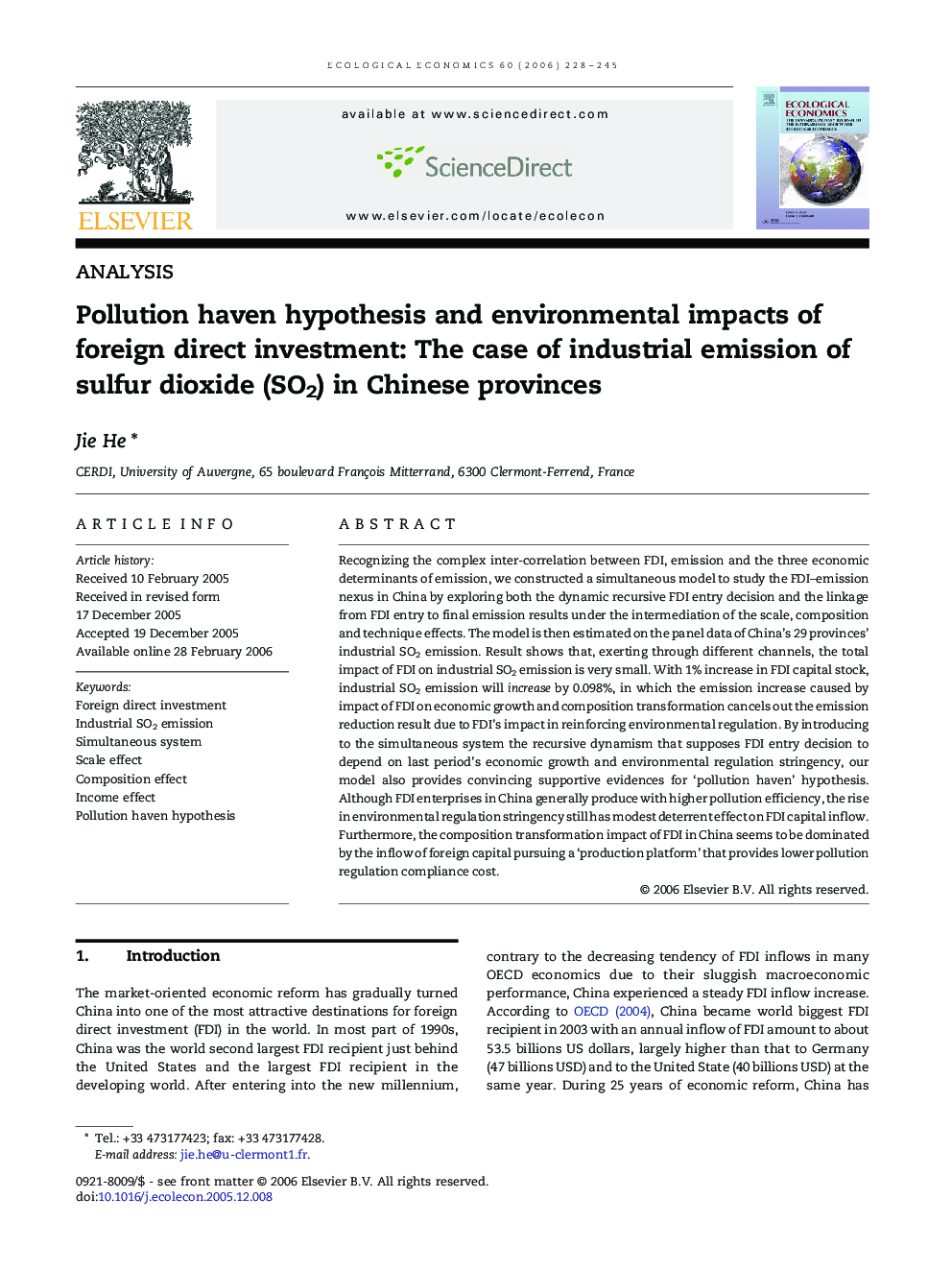| Article ID | Journal | Published Year | Pages | File Type |
|---|---|---|---|---|
| 5052417 | Ecological Economics | 2006 | 18 Pages |
Recognizing the complex inter-correlation between FDI, emission and the three economic determinants of emission, we constructed a simultaneous model to study the FDI-emission nexus in China by exploring both the dynamic recursive FDI entry decision and the linkage from FDI entry to final emission results under the intermediation of the scale, composition and technique effects. The model is then estimated on the panel data of China's 29 provinces' industrial SO2 emission. Result shows that, exerting through different channels, the total impact of FDI on industrial SO2 emission is very small. With 1% increase in FDI capital stock, industrial SO2 emission will increase by 0.098%, in which the emission increase caused by impact of FDI on economic growth and composition transformation cancels out the emission reduction result due to FDI's impact in reinforcing environmental regulation. By introducing to the simultaneous system the recursive dynamism that supposes FDI entry decision to depend on last period's economic growth and environmental regulation stringency, our model also provides convincing supportive evidences for 'pollution haven' hypothesis. Although FDI enterprises in China generally produce with higher pollution efficiency, the rise in environmental regulation stringency still has modest deterrent effect on FDI capital inflow. Furthermore, the composition transformation impact of FDI in China seems to be dominated by the inflow of foreign capital pursuing a 'production platform' that provides lower pollution regulation compliance cost.
